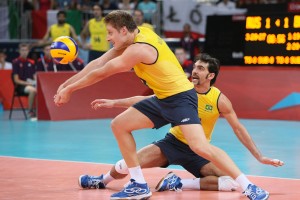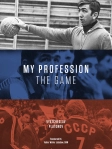 Photo – http://www.fivb.org
Photo – http://www.fivb.org
The words technique and skill are often used interchangeably or at the very least the distinction between the two is unclear. At my university they were very clear on the distinction. They taught that a technique exists in isolation. Essentially it is the mechanics of a particular action. On the other hand, skill is a technique performed during competition. It is technique in context. This neat and elegant distinction explains many of our observations, and explains why it is that players who can execute good technique in isolation can be poor in competition and vice versa.
The way I personally understand this distinction is that skill = technique + decision making. This formula is important for planning and developing practice. Technique is important* but if we are practicing to play, we cannot separate technique from decision making**. In even the simplest drills we can include a level of decision making which allows us to practice the skill alongside the technique, rather then separately. Which brings us to service reception.
Often, ‘service reception’ is practiced individually; one server with one passer. Often, when practicing ‘service reception’ a server will deliberately serve to a single receiver when the other is not ready. Often, when practicing ‘service reception’ servers will serve to only one part of the court. I would suggest that in none of these cases is the team actually practicing the skill of service reception. A very significant part of service reception is the decision making between players. It should be clear that each additional player added to the service reception formation adds an exponential level of complexity. Therefore, I would go on to suggest that the decisions on who should play which ball and when, are more important in determining the quality of a team’s service reception than the cumulative technical proficiency.
In short anything less than practicing ‘reception’ with all players on court is not really service reception. In a game technique cannot exist in isolation from skill.
In short, there is no such thing as individual reception.
* Technique is ALWAYS important.
** Except obviously for the very short periods of time when we must practice the mechanics.
Read about the great new Vyacheslav Platonov coaching book here.


Sounds good to me. Lots to reflect on with ‘technical’ sessions v practicing the skill in the correct context. However with some juniors I work with, most reception decisions are made pre-serve and communication upon service is mostly confirmation by the intended receiver. Our practises are designed to test how robust these decisions and whether or not players trust the person next to them not to jump in!
The lad with the mop on his shoulder is my current Under 18 libero. Best view in the house at the Olympics last year!!
LikeLike
Another ‘rough’ way of distinguishing between skill and technique is that technique training is ‘closed’ training whereas skill training is ‘open’ training.
One of Australia’s leading Skill Acquisition specialists once described the difference between open and closed training – open training for learning, you do closed training for confidence.
LikeLike
Experience (in playing) teaches you more rapidly than experience in coaching; the art therefore of coaching is to teach ‘playing’ but under duress so that technique becomes skill. In my observation of volleyball coaches and ‘training’, young coaches (or inexperienced players who have become coaches) fracture ‘sessions’ – it is a form of reductionism that is unlike the game. Some things must be developed in isolation, but the more ‘time under tension’ there is in training, the better the transition from technique to skill. (Raoul Tuul).
LikeLike
Hi Raoul
I like the term ‘reductionism’. It is a great description of how most coaches approach practice and problem solvinng. It describes neatly how wach individual component is practicied separately.
Coaches do this for several reasons. Mostly it is how they learnt themselves. The Asian and eastern European model was, and mostly still is, based on endless pointless repetitions, completely out of the context of the game (they are never taught to play, but the ones who figure it out themselves rise to the top and if you have enough of those, you have a pretty good team).
They also do it because it is, up to a point, logical (problems with reception therefore practice reception equals magical improvement) and because practice is much easier to plan and control if all the players are lined up and do single repetitions one after the other. In this case, the control of practice becomes more important than teaching the players.
Mostly though, I think, they do it because they never consider that the nature of volleyball is such that no technique/skill exists in isolation of others.
Volleyball is interactive. Everything has a context and a rhythm and a place and needs to be practiced as such.
LikeLike